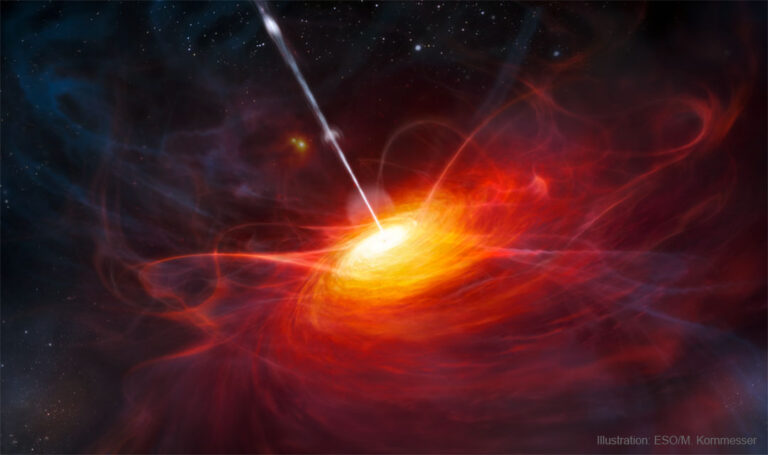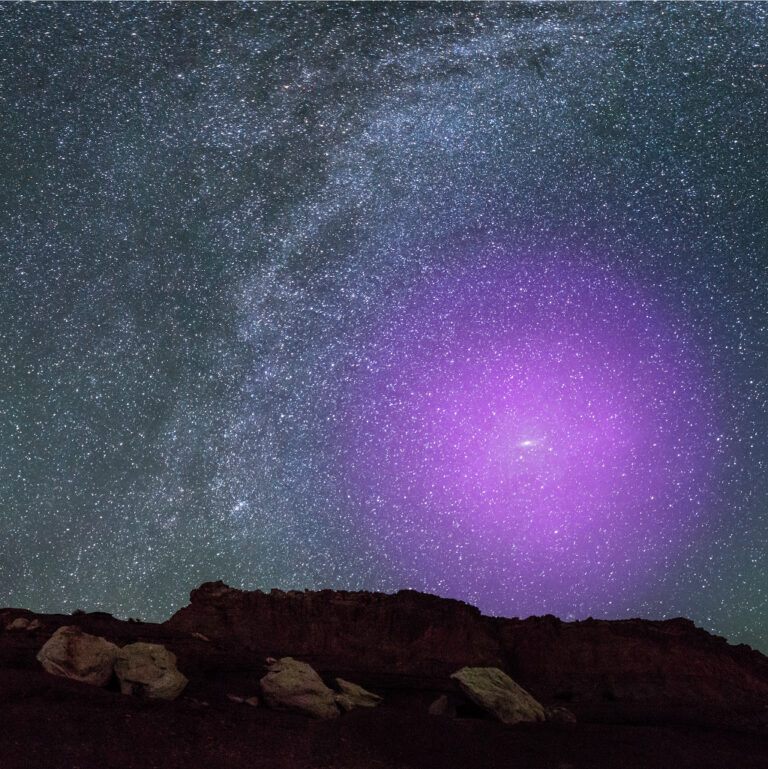图示:宇宙早期的类星体
2022年2月22日 Illustration: An Early Quasar Illustration Credit & License: ESO, M. Kornmesser Explanation: What did the first quasars look like? The nearest quasars are now known to involve supermassive black holes in the centers of active galaxies. Gas and dust that falls toward a quasar glows brightly, sometimes outglowing the entire home galaxy. The quasars that formed in the first billion years of the universe are more mysterious, though. Featured, recent data has enabled an artist’s impression of an early-universe quasar as it might have been: centered on a massive black hole, surrounded by sheets of gas and an accretion disk, and expelling a powerful jet. Quasars are among the most distant objects we see and give humanity unique information about the early and intervening…



